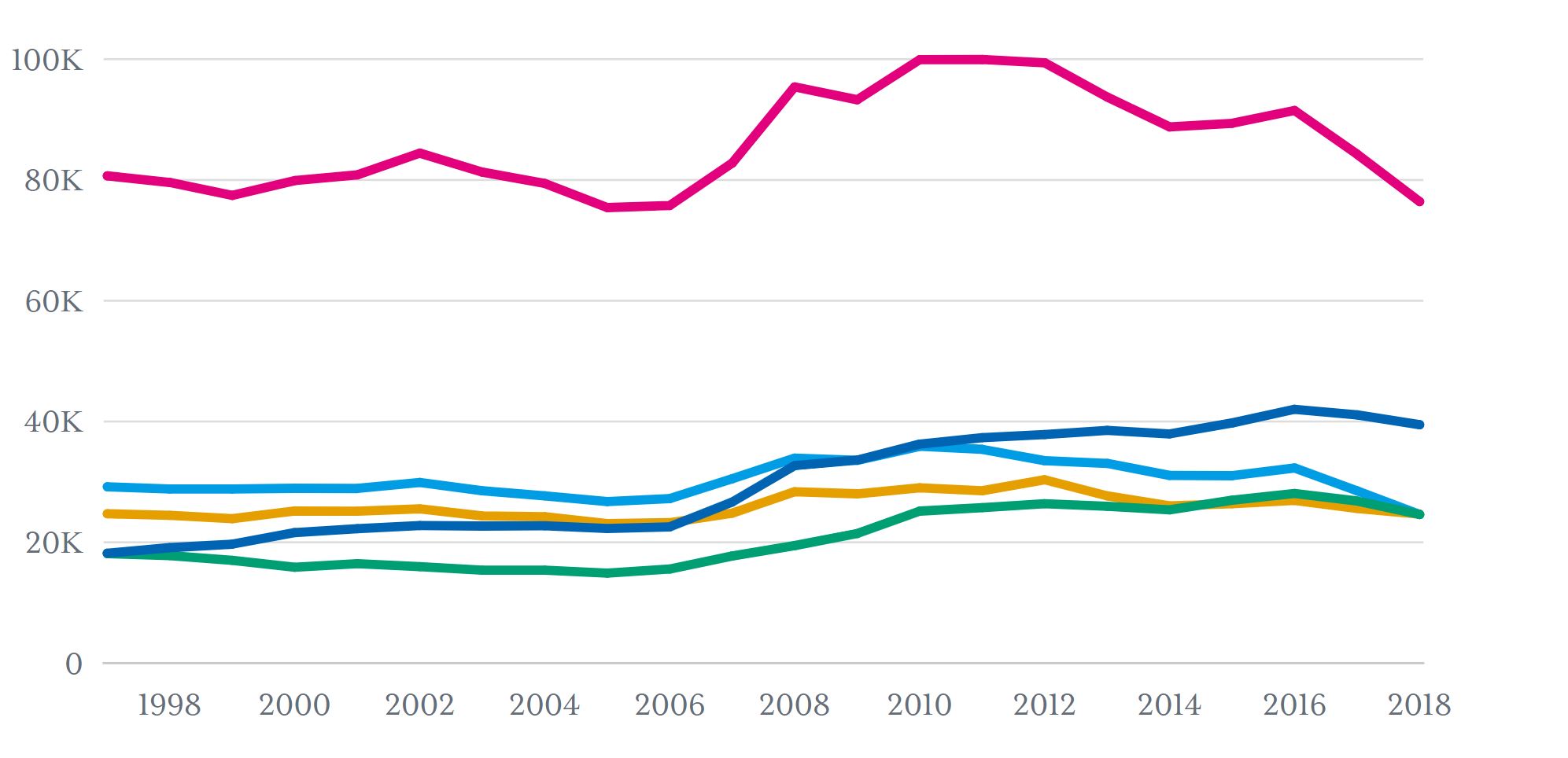Population
Ahead of Supreme Court hearing, here's a look at the data on LGBTQ workplace discrimination cases

Just as the data shows that people’s experiences with COVID-19 vary from one part of the country to another, the pandemic has also affected demographic groups differently.
Months of data from the Centers for Disease Control and Protection (CDC) underscore these disparities. For example, a highly-cited CDC report from April examined data on a sample of 580 patients hospitalized with COVID-19 and found that only 45% of the individuals for whom demographic data was available were white, though white people made up 59% of the surrounding community. At the same time, 33% of hospitalized patients in the sample were Black, compared to 18% in the community, and 8% were Hispanic, compared to 14% in the community. The report suggested that Blacks are overrepresented among hospitalized patients.
The CDC estimates that, of the 1 million deaths in the US from February 1 to June 6, 95,608 of them (or 8.8%) were due to COVID-19. Fifty-three percent of COVID-19 deaths have been among non-Hispanic white people, 23% have been among non-Hispanic Black people, and 16% have been among Hispanic people. Throughout this article, references to racial groups such as Black or Asian will refer to non-Hispanic populations, and references to Hispanic will refer to populations of Hispanic origin, regardless of race.
Adjusting for population, death rates for Black and Hispanic people are higher than those of white and Asian people in every age group, with Black people experiencing the highest death rates in every case. Death rates for Asian populations are generally between those of white and Hispanic populations.
For example, the death rate for Black Americans aged 35-44 is over eight times that of whites in this same group. Black people aged 35-44 are about as likely to die of COVID-19 as white people who are 55-64.
However, when looking at deaths due to COVID-19 as a percentage of all deaths that have occurred since February 1, COVID-19 has generally made up the largest proportion of deaths among Hispanic populations. For Hispanic people aged 45-74, COVID-19 has been responsible for nearly 20% of all deaths in the past four months. COVID-19 has also made up nearly 20% of all deaths for Asian people aged 55-74.
The experience of COVID-19 by different race and ethnic groups also varies by state. While the state data is less complete, it shows disparities in the experience of COVID-19 in some states. For example, in Michigan, the death rate for Black people aged 35-44 (28.5 per 100,000) is over 12 times that of white individuals (2.1 per 100,000). Similarly, in Louisiana, the death rate for Black people aged 45-54 (59.5 per 100,000) is nearly 13 times that of white people (4.3), and in Wisconsin, the death rate for Black people aged 55-64 (69.6) is 18 times that of white individuals (3.7). However, in some states, these gaps are somewhat less pronounced. In Ohio, the death rate for Black people aged 55-64 is 1.6 times that of whites.
As this data shows, tracking the experience of COVID-19 by race and age is critical to understanding which populations are being disproportionately impacted by the pandemic. It is essential that the CDC continues to update this data. It is also critical for more state and local public health agencies to disaggregate their COVID-19 data by race for a fuller account of differences by state. With this data, public health officials can target policies to best address the disparities in death rates experienced by racial groups shown in the CDC data.
The CDC's Provisional Death Count data is based on death certificates, which often take weeks to report to the federal agency. The CDC advises that the number of deaths reported in the Provisional Death Count Data are the total number of deaths received and coded as of the date of analysis, and do not represent all deaths that occurred in that period. Data during this period are incomplete because of the lag in time between when the death occurred and when the death certificate is completed, submitted to NCHS and processed for reporting purposes. This delay can range from 1 week to 8 weeks or more.
Daily numbers compiled by USAFacts are based on daily reports from state and local agencies.
Population
Population
Population
Population
Newsletter
Keep up with the latest data and most popular content.


